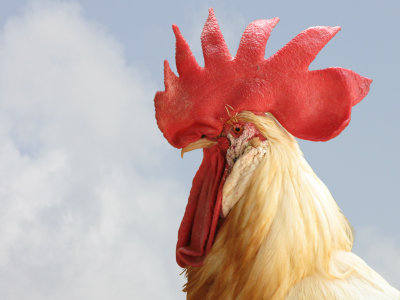Succeeded in producing plastic from chicken feathers

Plastic made from organic matter rather than petroleum oil "Bioplastic"Has attracted attention, but mainly made from crops such as corn and sugar cane was mainstream.
However, not a crop like that, but a technology to produce plastic from chicken feathers was developed. Most of the chicken feathers are discarded, so it seems possible to eliminate waste by using it as a raw material for plastics.
Details such as the merits obtained by realizing the bioplastic derived from chicken feathers are as follows.Tough plastic film made from waste chicken feathers
241st "National Meeting & Exposition of the American Chemical Society"Many organizations have published research on various ingredients ranging from fruit fibers to bone meal to make environmentally friendly plastics.
On the final day of the exhibition, a presentation on research to produce bioplastics from unnecessary chicken feathers was held. Even before, bioplastics made from chicken feathers had been in frustration after a while until practical use, but this time it will be practical.
Dr. Yiqi Yang, a member of the Agricultural and Natural Resources Research Institute of the University of Nebraska at Lincoln who announced this study, found that chicken feathers are rich in ingredients necessary for plastic production and are inexpensive and ideal for bioplastics It is commenting.
Today, in the United States alone, 1.36 billion kilograms of chicken feathers are generated as waste, and they are used for feeds for poor quality animals or discarded.
The feather consists mainly of keratin, which is the same protein that makes up the corners and hooves of animals, but thermoplastic films made from keratin are made from other raw materials such as modified starch and vegetable protein It seems to be stronger than bioplastic made from.
The bioplastic derived from the chicken feathers made before was a weak point that there is a part that is inferior in water resistance. In order to overcome this drawback, Dr. Yang succeeded in making the chain of plastic molecules longer by treating feathers with chemicals such as methyl acrylate.
The "feather-g-poly" plastic derived from the chicken feathers created by this is not only strong, but also can be melted and recycled like other plastics, water resistance which was a concern for many years also improved That is to say.
If the chicken feathers that were supposed to be scrapped originally become plastics raw materials and can be recycled, it will help save valuable petroleum resources and the carbon dioxide emissions rate will also be lowered and may have a positive impact on the global environment. not.
Related Posts:
in Science, Posted by darkhorse_log







